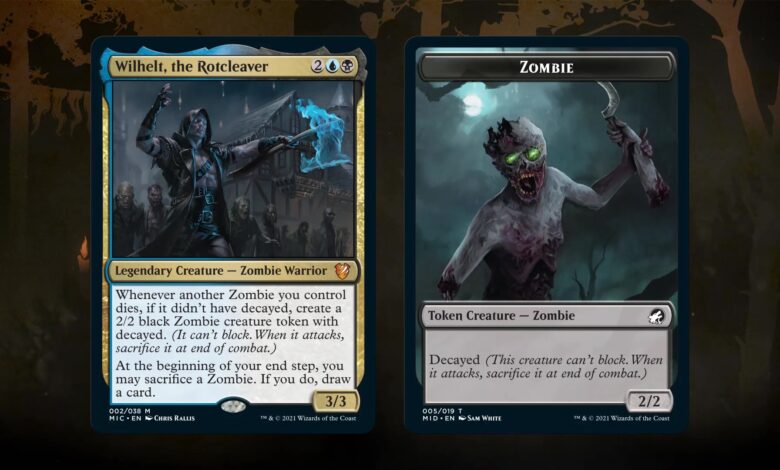Understanding Decayed: MTG rules

Magic: The Gathering (MTG), the iconic collectible card game, is renowned for its ever-evolving gameplay and diverse mechanics. In recent times, a new set of rules has emerged, adding a thrilling twist to the game: the Decayed rules. In this article, we will delve into the intricacies of these rules, their impact on gameplay, and how they have redefined strategic decision-making in MTG.
Understanding Decayed: MTG Rules
Decayed is a mechanic introduced in recent MTG sets, notably in the Innistrad: Midnight Hunt expansion. Under this rule, certain creatures have a new keyword ability called “Decayed.” These creatures enter the battlefield with a Decayed counter and cannot be untapped during the untap step. Once they attack or block, they are sacrificed at the end of combat. The Decayed rule adds a layer of complexity to the game, forcing players to carefully consider their timing and resource management.
Strategic Implications of Decayed
The Decayed rule presents players with intriguing strategic choices. These creatures offer immediate value upon entering the battlefield, providing opportunities for aggressive attacks or crucial defensive maneuvers. However, their limited lifespan demands careful planning, as their sacrifice after combat must be factored into gameplay decisions.
Deck Building and Synergies
The Decayed rule also has significant implications for deck building strategies. Players must consider the balance between Decayed creatures and non-Decayed cards, as well as the synergy between various mechanics. Some players may opt for decks that focus on maximizing the impact of Decayed creatures by leveraging abilities that trigger upon creature death or sacrifice. Others may choose to combine Decayed creatures with effects that grant additional combat phases or provide alternate win conditions.
Impact on Gameplay Dynamics
The introduction of the Decayed rule has injected fresh energy into MTG gameplay. The limited lifespan of Decayed creatures fosters a sense of urgency and forces players to adapt their strategies on the fly. It adds an element of surprise to combat scenarios and encourages players to think strategically about the optimal moment to deploy their Decayed creatures. This rule has breathed new life into older cards with the potential to create synergistic interactions, creating exciting deck-building possibilities.
The Competitive Landscape
Decayed MTG rules have made their presence felt in various competitive formats. From casual kitchen table play to high-stakes tournament environments, players are experimenting with Decayed decks and incorporating the rule into their existing strategies. The introduction of new cards and sets featuring the Decayed mechanic has sparked discussions among players, content creators, and the broader MTG community, as they explore the potential impact of Decayed on competitive metagames.
Future Prospects and Adjustments
As with any new rule or mechanic, the Decayed rules may require adjustments and fine-tuning. Wizards of the Coast, the creators of MTG, actively monitor player feedback and the impact of the Decayed rules on gameplay dynamics. They have a history of addressing balance issues and making changes when necessary, ensuring a healthy and enjoyable gaming experience for all players.
Conclusion
The Decayed rules have added a captivating new dimension to the game, introducing fresh strategic possibilities and challenging players to think on their feet. This mechanic has redefined combat scenarios and invigorated deck-building strategies, encouraging players to explore new synergies and adapt their playstyles. As the MTG community continues to embrace and refine the Decayed rules, it is an exciting time to witness the evolution of the game and see how these rules shape the competitive landscape.

